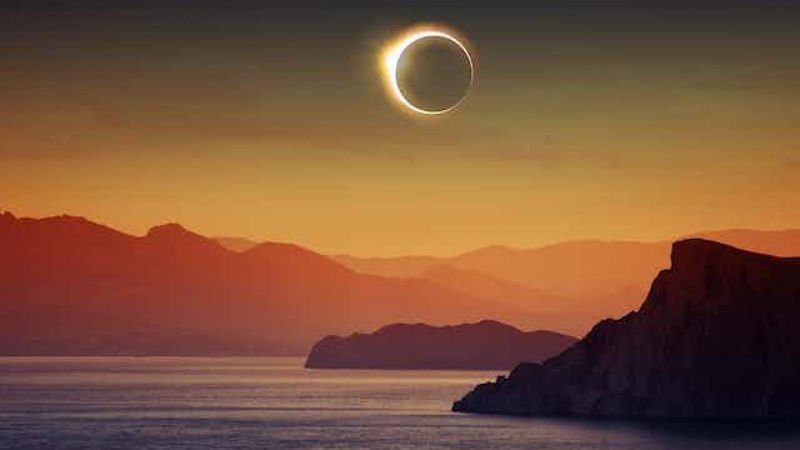Eclipses, celestial events that have fascinated and mystified cultures throughout history, showcase the intricate dance of the sun, moon, and Earth. Solar eclipses plunge us into temporary darkness, while lunar eclipses cast a subtle red hue upon the moon. Join us as we unveil the wonders of solar and lunar eclipses, exploring the science behind these marvels and the cultural significance they hold.
Solar Eclipses: A Dance of Shadows
1. The Solar Eclipse Ballet
A solar eclipse occurs when the moon passes between the Earth and the sun, casting a shadow on our planet. The alignment must be precise for the moon to cover the sun fully, creating the awe-inspiring phenomenon known as totality.
2. Types of Solar Eclipses
Solar eclipses come in various types, including total, partial, and annular eclipses. In a total solar eclipse, the sun is entirely obscured by the moon, revealing the solar corona—a spectacular sight visible only from the path of totality.
Lunar Eclipses: The Moon’s Scarlet Transformation
1. Earth’s Shadow Play
A lunar eclipse occurs when the Earth passes between the sun and the moon, causing our planet’s shadow to be cast upon the lunar surface. Unlike solar eclipses, lunar eclipses are visible from anywhere on the nighttime side of the Earth.
2. The Coppery Glow of Totality
During a total lunar eclipse, the moon often takes on a reddish hue. This phenomenon, known as the “blood moon,” is a result of Earth’s atmosphere filtering and refracting sunlight, allowing only the longer wavelengths to reach and illuminate the lunar surface.
Witnessing Eclipses: Safety and Spectacle
1. Solar Eclipse Safety
Observing a solar eclipse requires caution to prevent eye damage. Specialized solar viewing glasses or solar filters for telescopes and binoculars are essential for safely witnessing the sun’s phases during an eclipse.
2. Lunar Eclipse Watching
No special equipment is needed to observe a lunar eclipse. Simply find a location with a clear view of the moon, and enjoy the celestial spectacle with the naked eye or binoculars. The varying stages of the eclipse unfold over several hours.

Cultural Significance of Eclipses
1. Myths and Legends
Throughout history, diverse cultures have crafted myths and legends around eclipses. These celestial events often inspired awe, fear, or reverence, with interpretations ranging from cosmic battles to the symbolic renewal of celestial bodies.
2. Eclipse Superstitions
Eclipses have sometimes been associated with superstitions and cultural taboos. Many believed that eclipses signaled impending disasters or the wrath of deities, leading to rituals and precautions to ward off perceived ill effects.
Astronomical Alignments and Coincidences
1. Rare Celestial Events
Eclipses, though relatively common, are part of a series of intricate celestial alignments. The periodicity and recurrence of eclipses have been studied for centuries, revealing patterns and cycles that continue to captivate astronomers and stargazers.
2. Selenelion: Eclipse Across the Horizon
During certain lunar eclipses, observers might witness a phenomenon known as selenelion—a rare event where both the sun and the eclipsed moon are visible above the horizon simultaneously. This occurs due to the bending of sunlight by Earth’s atmosphere.
Future Eclipses: Celestial Dates to Remember
1. Upcoming Solar Eclipses
Eager skywatchers can mark their calendars for upcoming solar eclipses, including total eclipses visible from specific regions. Planning ahead allows enthusiasts to travel to optimal locations for a front-row seat to totality.
2. Lunar Eclipse Calendar
Lunar eclipses are more frequent and visible from a broader range of locations. A lunar eclipse calendar helps enthusiasts anticipate and enjoy the various stages of these celestial events throughout the year.
Conclusion
Eclipses, with their cosmic choreography, offer a profound connection between Earth, the moon, and the sun. From the breathtaking beauty of a total solar eclipse to the ethereal glow of a blood moon during a lunar eclipse, these celestial marvels have stirred the human imagination for centuries. Whether viewed through the lens of science, mythology, or cultural significance, eclipses continue to be celestial ballets that unfold in the vast theater of the cosmos, reminding us of the wonders that lie beyond our earthly horizons.

